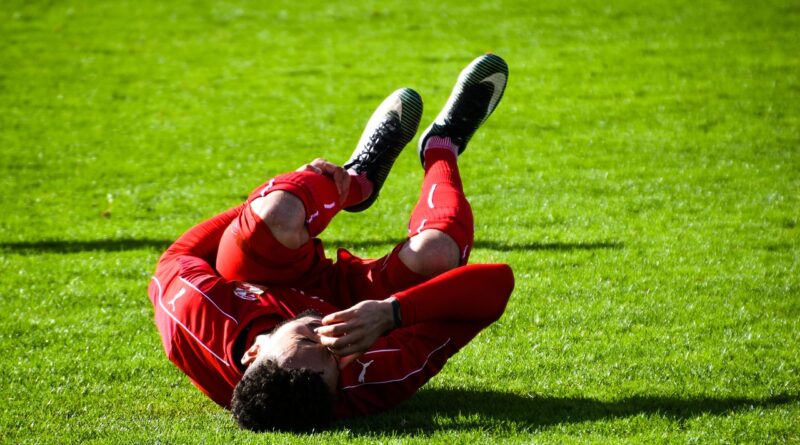Simple Strategies for Relieving Muscle Cramps and Spasms
Muscle cramps and spasms can be incredibly frustrating and painful experiences. Whether you’re an athlete, a weekend warrior, or someone who simply enjoys being active, these involuntary muscle contractions can strike at the most inconvenient times. But fear not, my friends! In this article, we’ll explore some simple yet effective strategies to help you find relief from those pesky muscle cramps and spasms.
Understanding Muscle Cramps and Spasms
Before we dive into the remedies, let’s take a quick look at what causes these unwanted muscle contractions. Muscle cramps and spasms can occur for a variety of reasons, including dehydration, electrolyte imbalances, overuse, and even poor circulation. They can strike in any muscle group, from your calves to your hamstrings, and even your back or neck.
Hydration is Key
One of the most effective ways to prevent and alleviate muscle cramps and spasms is to stay hydrated. When you’re dehydrated, your body loses essential electrolytes like sodium, potassium, and calcium, which can lead to muscle contractions. So, make sure you’re drinking plenty of water throughout the day, especially before, during, and after physical activity. But wait, there’s more! Electrolyte-rich beverages like sports drinks or coconut water can also help replenish the minerals your body needs to function properly. Just be mindful of the sugar content in some of these drinks, and opt for low-sugar or sugar-free options whenever possible.
Stretch it Out
Stretching is another simple yet effective way to combat muscle cramps and spasms. When a muscle cramps, it’s essentially contracting and shortening, so stretching can help lengthen and relax the muscle fibers. Try gentle static stretches, holding each stretch for 20-30 seconds, and focus on the affected muscle group. If you’re experiencing a calf cramp, for example, you can try a standing calf stretch by placing your toes against a wall and leaning forward, keeping your heel on the ground. For a hamstring cramp, try a seated forward bend or a standing hamstring stretch.
Massage and Heat Therapy
Massage and heat therapy can also provide relief from muscle cramps and spasms. Gentle massage can help increase blood flow to the affected area, which can aid in relaxing the muscle and reducing tension. You can use your hands, a foam roller, or even a tennis ball to apply pressure and massage the cramped muscle. Heat therapy, such as a warm compress or a heating pad, can also help relax the muscle fibers and improve blood flow. Just be careful not to apply too much heat, as excessive heat can actually cause further muscle tightness and discomfort.
Over-the-Counter Remedies
If the cramp or spasm persists despite your efforts, you may want to consider over-the-counter remedies. Non-steroidal anti-inflammatory drugs (NSAIDs) like ibuprofen or naproxen can help reduce inflammation and alleviate pain associated with muscle cramps and spasms. Additionally, topical creams or ointments containing menthol or capsaicin (the compound that gives chili peppers their heat) can provide a cooling or warming sensation that may help relax the muscle and reduce discomfort.
Rest and Recovery
Finally, don’t underestimate the power of rest and recovery. If you’ve been pushing your body to its limits, it’s important to give your muscles a chance to recover and repair. Take a break from strenuous activity, and allow your body to rest and recuperate. During this recovery period, you may also want to incorporate gentle stretching and light massage to help promote blood flow and reduce muscle tension.
Preventing Future Cramps and Spasms
While the strategies we’ve discussed can provide relief from muscle cramps and spasms, it’s also important to take preventative measures to reduce the likelihood of these unwanted muscle contractions in the future. First and foremost, make sure you’re properly hydrating before, during, and after physical activity. Drink plenty of water and consider incorporating electrolyte-rich beverages or snacks into your routine. Secondly, warm up properly before engaging in any strenuous activity. Dynamic stretches and light cardio can help prepare your muscles for the work ahead and reduce the risk of cramps and spasms. Additionally, listen to your body and avoid overexerting yourself. If you’re feeling fatigued or experiencing muscle soreness, take a break and allow your body to recover. Finally, consider incorporating regular stretching and foam rolling into your routine. These practices can help improve flexibility, reduce muscle tension, and promote overall muscle health.
Conclusion
Muscle cramps and spasms can be frustrating and painful, but with the right strategies, you can find relief and prevent future occurrences. Remember to stay hydrated, stretch regularly, incorporate massage and heat therapy, and listen to your body’s needs. And if the discomfort persists, don’t hesitate to seek medical advice. By following these simple strategies, you’ll be better equipped to tackle those pesky muscle cramps and spasms, allowing you to continue pursuing your active lifestyle with confidence and comfort.

